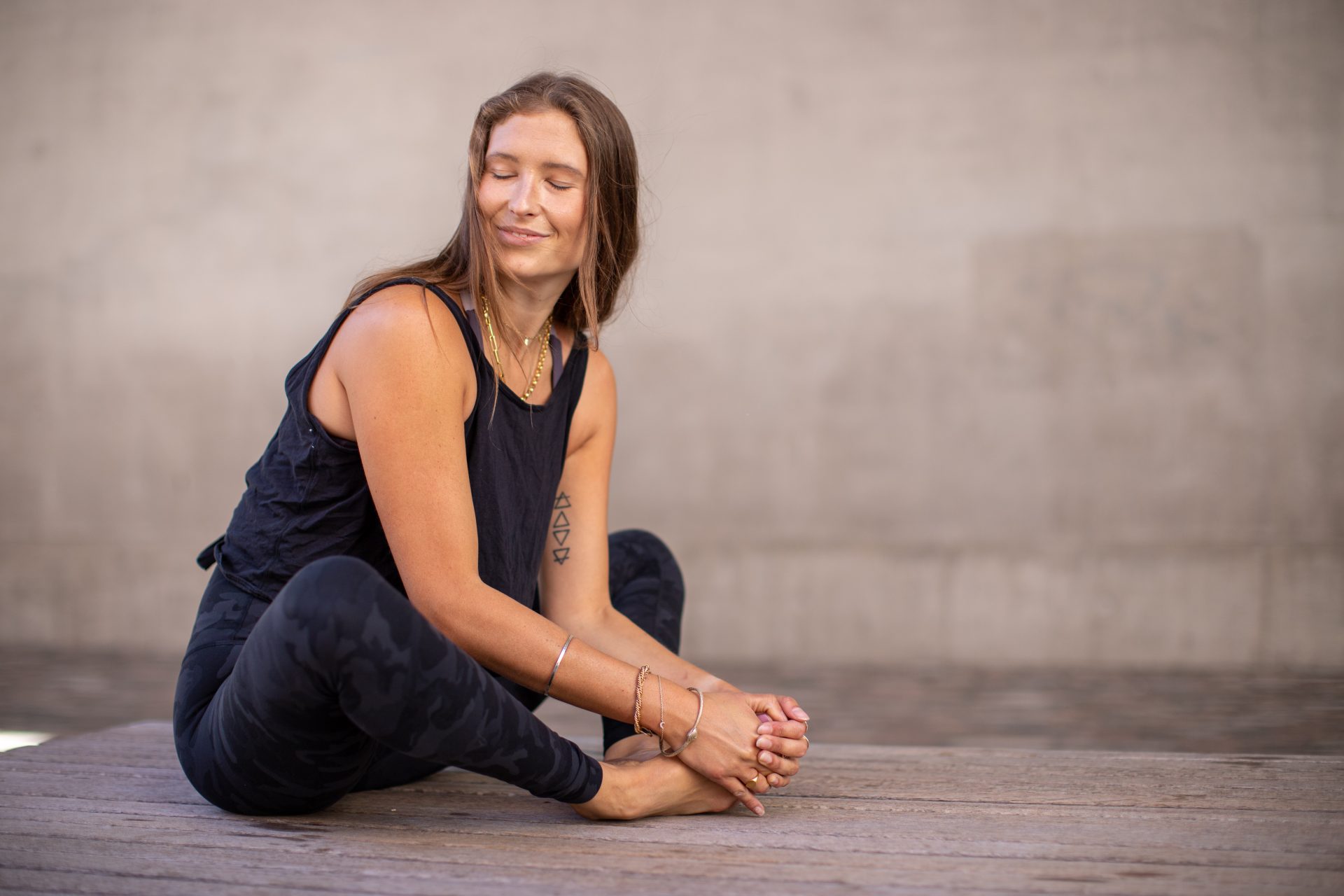Don’t be put off by overwhelming yoga practices – these five essential elements should be used in every practice.
There are two types of people in the world: those who find their mind relaxes and body softens at just the thought of a yoga class, and those who can’t understand how getting in triangle pose could ever be relaxing. If you’re the latter, and you stiffen and stress during stretching classes, you’re not alone. Many people find yoga practices overwhelming, particularly when they include tricky balances and fast-paced flows.
The benefits of yoga are too great to be ignored though. Rather than feel intimidated, stripping back your practice to the fundamental elements is the best place to start. Whether you’re interested in practising for yoga’s impact on your mental health, flexibility or strength, breaking down your session into its simple building blocks can make you feel more confident.
You may also like
Strength training: 5 fundamental moves you should include in your workouts
“It’s so important to have the fundamentals of your practice down if you want to achieve some of the really cool postures without injury, but also to manage any physical or mental ailments and get the most out of your practice,” says yoga instructor Angie Tiwari.
Below are the five fundamental elements of your yoga that will help you reap the physical and mental benefits of the practice. You can simply get acquainted with the moves before your class, pick one from each of the sections for your own quick post-work stretch or move through a few of the postures for a longer session.
Twists
Starting your practice with some gentle twisting poses can set you up well for the rest of your session – and the rest of your day. Not only because it helps to lubricate the spine, but “twists help to bring out stagnant energy, which is why they’re good for the digestive system as well as meaning they are very energising postures,” says Annie Clarke, yoga instructor from the Strong Women Collective.
The best twists in yoga
- Reclined twist
- Revolved lunge
- Revolved triangle pose
- Half lord of the fishes
You may also like
11 tips to make yoga feel easier and more enjoyable
Inversion
“Inversions in yoga are anything where your heart is above your head, but for beginners you can get the same benefits from elevating your legs instead,” says Annie. If you’re not ready to dive into a handstand, legs up the wall can stimulate the same responses in your body. “The poses reverse the impact of gravity on our blood flow, so they can be really supportive for healthy circulation and calming the nervous system.”
For Angie, inversions have a huge impact on mental health too. “So many people are understandably fearful of being upside down. But once you start practising and learning how to fall out of the poses in the right way, you build so much confidence,” she says.
The best inversions in yoga
- Downward facing dog
- Headstand
- Handstands
- Legs up the wall
- Rag doll

Heart opener
“From a physical perspective this is really supportive for the spine, especially if you’re spending a lot of time at a desk with everything at the front of your body closed off,” says Annie. “But it’s very important for us to connect to our energetic or spiritual heart space in yoga as this holds a huge amount of energy. When we are engaged with that, we connect to our sense of compassion and joy.”
The best heart openers in yoga
- Cobra
- Upward facing dog
- Cow
- Wheel
Hip opener
Generally, most people struggle with tight hips and hamstrings, says Angie. “We have tight hips from running and lifting weights as well as sitting down all day – frustratingly, both activity and inactivity can cause tightness,” says Angie. So if your motivation for yoga is to improve your performance in other sports, it’s essential to open the hips.
But hip openers have other benefits besides the physical. “We hold a huge amount of residual tension in the body, but for most people a lot of that is in the hips,” agrees Annie. “Anytime that we’ve sort of suppressed emotion or stress it very often resides in places such as the hips and the jaw. Hip opening postures encourage the healthy release of withheld emotional energy.”
The best hip openers in yoga
- Pigeon pose
- Butterfly pose
- Malasana (yogi squat)
- Pawanmuktasana (knees to chest)

Meditation
It’s the part so many people forget about (or intentionally ignore). But linking the asana – the physical movements in yoga – with the meditative element is essential to a holistic practice that benefits you. “Breathing in a conscious way throughout the yoga practice is the magic ticket between it just being any old exercise and actually something that connects the nervous system, the mind, and the body,” says Annie.
However, it takes time for all of these elements to connect, which is why meditative elements shouldn’t just take place during your poses but be a chunk of the practice in their own right. “In a 60 minute class we should really be setting about 15 minutes aside just to breathing. Moving quickly is a very western thing but in yoga we need to engage with the slower elements of the practice and work harder to connect.”
This means spending some time on your mat engaging your breath before starting the practice, and always ending in shavasana (or corpse pose). “There’s so much happening on a deeper level through the different elements of this practice so we need to spend a few minutes allowing all of that to settle,” says Annie.
Follow @StrongWomenUK on Instagram for the latest workouts, delicious recipes and motivation from your favourite fitness experts.
Images: Annie Clarke / Duffy
Source: Read Full Article
